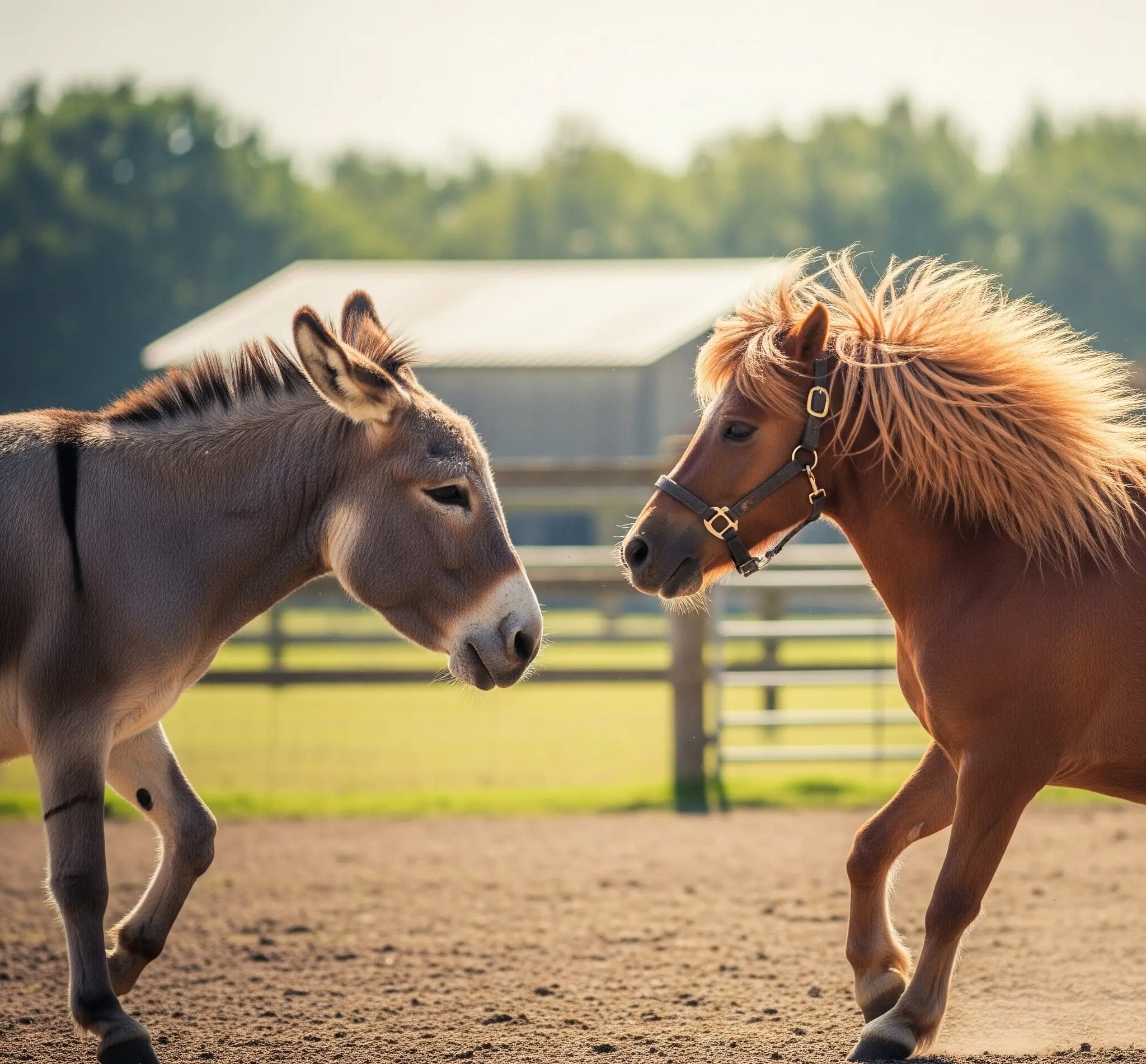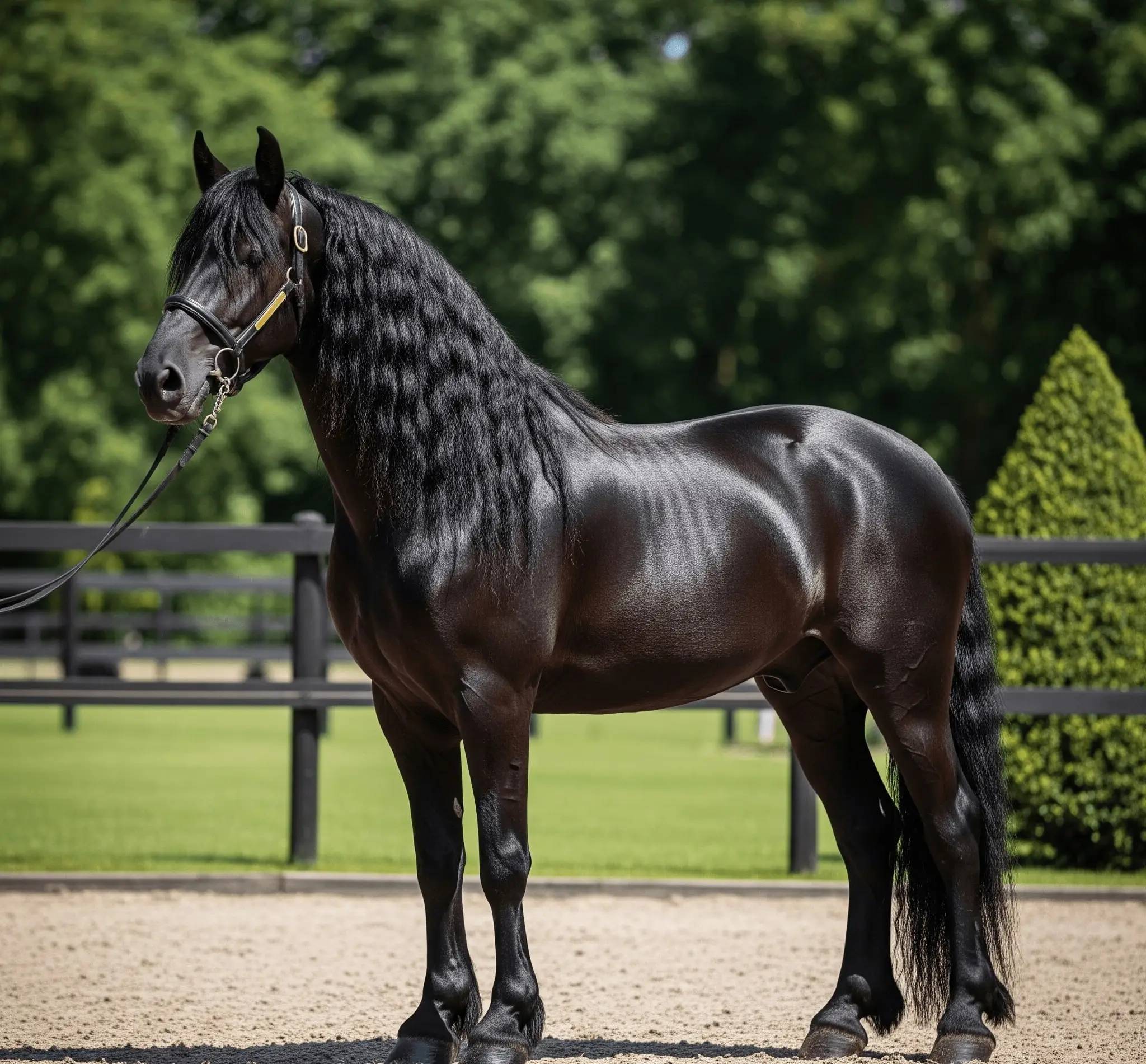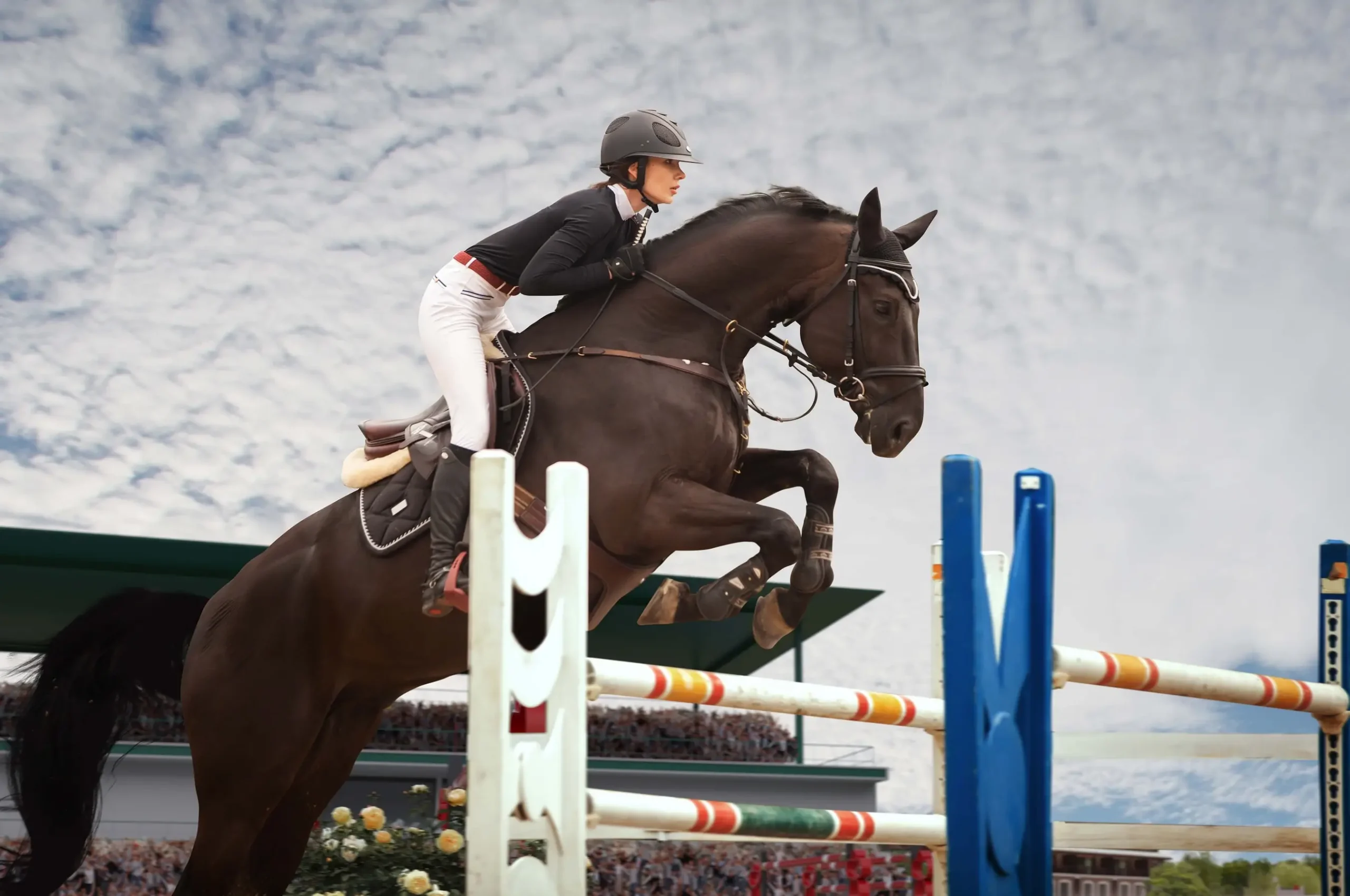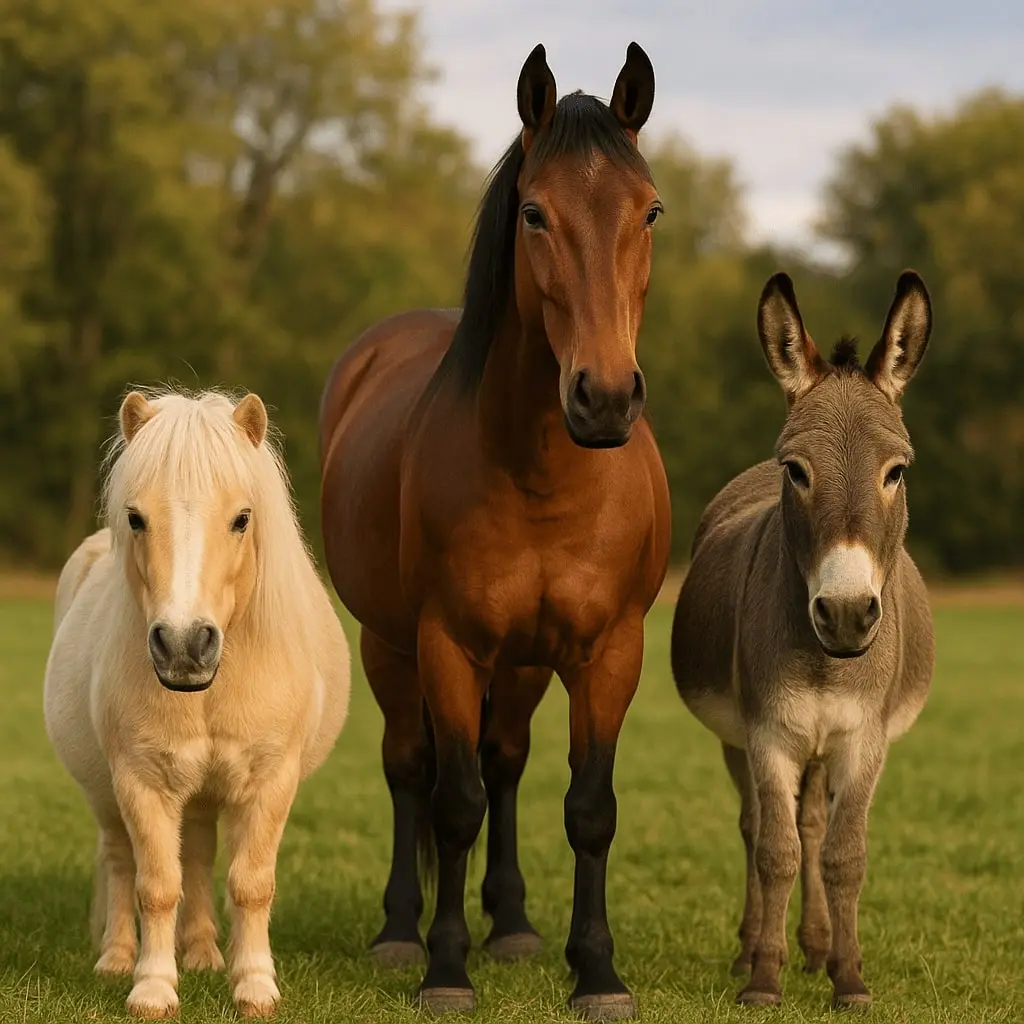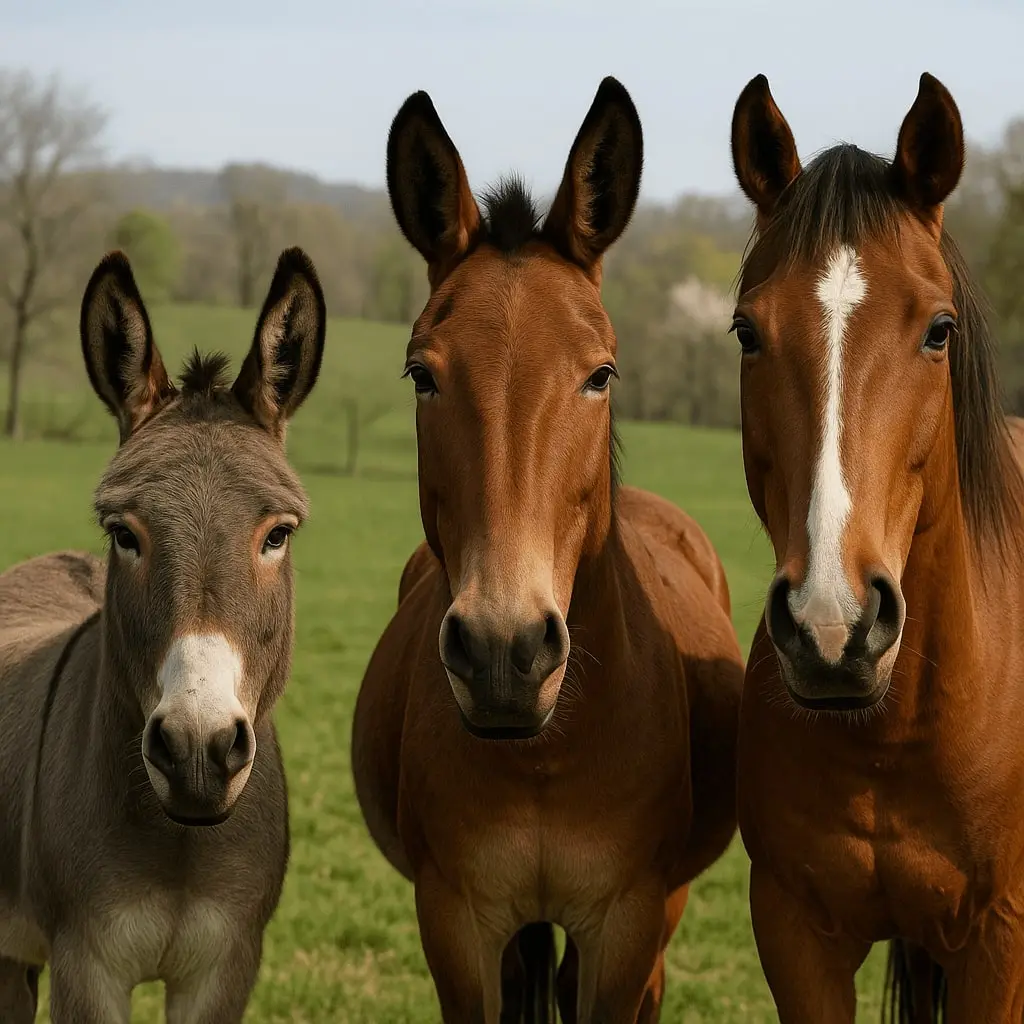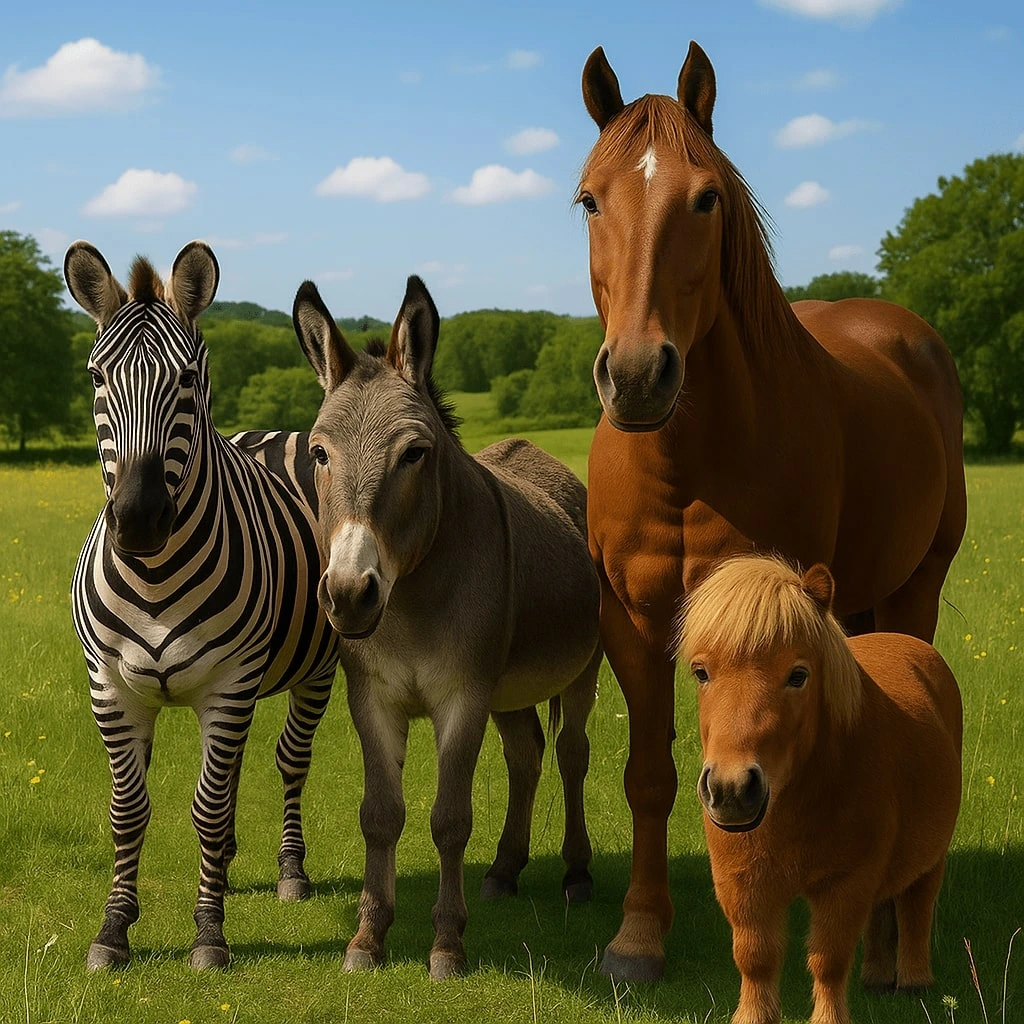When people talk about horses, they sometimes mix up donkeys and ponies. But donkeys and ponies are not the same. In fact, they are different animals with special traits. This blog will help you learn the difference between a donkey and a pony by looking at Donkey vs Pony.
Donkeys have long ears, rough coats, and are usually stronger for their size. They are known for being very tough and able to carry heavy loads. Ponies, on the other hand, are smaller horses with shorter legs and thick manes. They are often friendly and good for kids to ride.
Knowing the difference between donkey and pony helps us take better care of them. Donkeys need different food, shelter, and care compared to ponies. Also, understanding their behavior and needs makes it easier to be kind and respectful to these animals.
In this blog by I Heart Horses, we will explore the main differences in appearance, habits, and uses between donkeys and ponies. By learning about Donkey vs Pony, you will understand why they are unique and why it is important to treat each one in the right way.
Donkey: The Hardy Worker
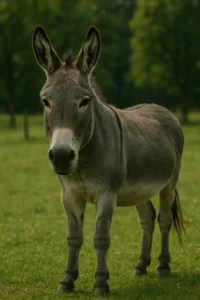
Origins and Domestication
The domestication of donkeys (Equus asinus) traces back over 7,000 years to northeastern Africa, specifically the Horn of Africa. Genetic studies indicate that the Nubian wild ass (Equus africanus africanus) was the primary ancestor of the domestic donkey. This domestication was pivotal during a period when the Sahara transitioned into the arid desert we recognize today, making the donkey an invaluable asset for traversing and transporting goods across expanding dry terrains.
By 3000 BCE, donkeys had spread to regions like Mesopotamia and Egypt, where they were integral to agriculture, trade, and military endeavors. In ancient Egypt, evidence suggests that wealthy individuals owned over 1,000 donkeys, utilizing them for various purposes including agriculture, transport, and even as symbols of status.
Physical Characteristics
- Size and Build: Adult donkeys typically stand between 92 to 123 cm at the shoulder and weigh between 180 to 450 kg, depending on breed and environmental conditions.
- Hooves: The hooves of donkeys are more durable and compact compared to those of horses, making them well-suited for traversing rocky and uneven terrains. Their hooves require regular maintenance to prevent overgrowth and ensure optimal functionality.
Behavior and Intelligence
Contrary to the misconception of stubbornness, donkeys exhibit remarkable intelligence and problem-solving abilities. Studies have shown that donkeys can learn and remember tasks, navigate challenging terrains, and make decisions based on risk assessment. Their cautious nature is a survival mechanism, allowing them to assess potential dangers before reacting. This trait has made them reliable companions in various working environments.
Donkeys also possess a strong sense of self-preservation and can form deep bonds with humans and other animals. Their ability to recognize familiar individuals and respond to emotional cues underscores their social intelligence.
Roles and Uses
Agriculture: Donkeys have been indispensable in agricultural practices, especially in regions where mechanized equipment is impractical. They are used for plowing fields, transporting harvested crops, and carrying water for irrigation.
Transportation: In many parts of the world, donkeys serve as primary means of transport, especially in areas with challenging terrains or where roads are inaccessible. Their surefootedness and endurance make them ideal for navigating mountainous or desert landscapes.
Livestock Guardians: Donkeys have a natural instinct to protect other animals. They are often used as guardians for livestock such as sheep and goats, deterring predators like foxes and dogs with their braying and defensive behaviors.
Conservation Efforts: In conservation areas, donkeys assist in anti-poaching efforts by patrolling remote regions and carrying supplies for rangers. Their ability to navigate difficult terrains and carry heavy loads makes them valuable assets in wildlife protection initiatives.
Reproductive Traits: Donkeys have a gestation period of approximately 12 months, typically giving birth to a single foal. Their reproductive cycle is influenced by environmental factors, and they often give birth during favorable conditions to ensure the survival of the offspring.
Global Presence: With an estimated population of over 40 million, donkeys are found worldwide, particularly in regions of Africa, Asia, and Latin America. In countries like China, Ethiopia, and Mexico, donkeys play a crucial role in the daily lives of rural communities, contributing to agriculture, transportation, and trade.
Conservation and Welfare: Despite their historical significance, donkeys face challenges such as overwork, inadequate nutrition, and exploitation. Organizations like The Donkey Sanctuary work globally to provide veterinary care, education, and support to improve the welfare of donkeys.
Fun Facts
- Exceptional Hearing: Donkeys can rotate their ears 180 degrees, allowing them to hear in all directions and detect sounds from far distances.
- Distinctive Vocalization: A donkey’s bray can be heard up to 3 kilometers away, serving as a means of communication and alerting others to potential dangers.
- Long Lifespan: With proper care, donkeys can live up to 30 years or more, forming lasting bonds with their human companions.
Donkeys In A Nutshell
Donkeys are more than just beasts of burden; they are intelligent, resilient, and compassionate animals that have played a pivotal role in human history. Their contributions to agriculture, transportation, and conservation continue to be invaluable. Recognizing and appreciating the unique qualities of donkeys ensures their continued well-being and the preservation of their legacy.
Pony: The Compact Powerhouse
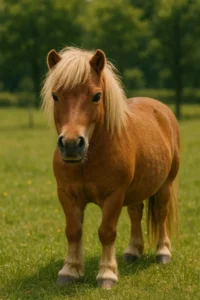
Origins and Evolution
Ponies are distinct equines that have evolved to thrive in challenging environments. Their origins trace back to various regions, each contributing unique traits to the breeds we recognize today. For instance, the Shetland Pony hails from the harsh climates of the Shetland Islands in Scotland, while the Connemara Pony originates from the rugged terrains of Ireland. These ponies were bred for their resilience, strength, and adaptability, qualities that have been preserved and celebrated over centuries.
Physical Characteristics
- Size and Build: Ponies are generally smaller than horses, standing at 14.2 hands (58 inches) or shorter. Despite their compact size, they possess a robust and muscular build, allowing them to carry weight proportionate to their size. This sturdy frame makes them suitable for various tasks, from riding to pulling carts.
- Coat and Color: Ponies typically have thick coats that provide insulation against cold weather. Their coats come in a variety of colors, including bay, chestnut, grey, and black. Some breeds, like the Highland Pony, are known for their distinctive dun shades.
- Hooves: Ponies possess strong, durable hooves that are well-suited for traversing rough terrains. Regular maintenance is essential to ensure their health and functionality.
Behavior and Intelligence
Ponies are known for their intelligence and strong-willed nature. They are quick learners and can be trained for various disciplines, including dressage, jumping, and driving. Their independent streak requires consistent and patient training methods. Ponies are also known for their strong bond with humans, often forming deep attachments to their handlers.
Roles and Uses
- Riding: Ponies are popular mounts for children and light adults due to their manageable size and temperament. Breeds like the Welsh Pony and the Connemara Pony are particularly favored for riding.
- Driving: Many pony breeds are used in driving competitions and recreational driving. The Shetland Pony, for example, is renowned for its prowess in harness work.
- Therapy: Ponies are increasingly used in therapeutic settings, providing emotional support and aiding in physical rehabilitation. Their gentle nature makes them ideal companions in such environments.
- Work: Historically, ponies were used for heavy work, including hauling carts and plowing fields. While modern machinery has replaced many of these tasks, ponies are still employed in some areas for traditional work.
Global Distribution
Ponies are found worldwide, with specific breeds adapted to their native regions. The Shetland Pony is native to the Shetland Islands, while the Connemara Pony originates from Ireland. Other notable breeds include the Welsh Pony from Wales and the Dartmoor Pony from Devon, England. Each breed has unique characteristics suited to its environment, contributing to the rich diversity of pony breeds globally.
Fun Facts
- Longevity: Ponies often live longer than horses, with some reaching 30 years or more with proper care.
- Strength: Despite their size, ponies are incredibly strong and can carry weight up to 20% of their body weight.
- Versatility: Ponies excel in various disciplines, including dressage, jumping, driving, and even polo.
Ponies In A Nutshell
Ponies are remarkable equines that combine strength, intelligence, and versatility in a compact package. Their rich history and diverse breeds highlight their adaptability and enduring appeal. Whether as companions, workers, or competitors, ponies continue to captivate and serve humans in myriad ways.
Donkey vs Pony – Comparative Overview
Donkeys and ponies are both part of the horse family, but they have important differences. In this Donkey vs Pony – Comparative Overview, we will look at how they compare in size, shape, and behavior. Donkeys have long ears and are very strong, while ponies are smaller horses with thick manes. Donkeys are known for carrying heavy loads and being calm but stubborn. Ponies are often friendly and good for riding. Understanding these differences helps us take better care of donkeys and ponies and treat each animal the right way.
| Feature | Donkey | Pony |
| Size | Smaller (90–150 cm) | Shorter than 14.2 hands (148 cm) |
| Coat | Coarse, less waterproof | Thicker, insulating |
| Ears | Long and large | Shorter |
| Hooves | Smaller, upright | Strong and durable |
| Temperament | Intelligent, cautious, independent | Intelligent, friendly, energetic |
| Social Structure | Pairs with one other donkey | Herd animals |
| Flight Response | Assess before reacting | Flee from danger |
| Uses | Pack animal, endurance tasks | Riding, driving, companion animal |
Summary:
In summary, while donkeys and ponies share the equine lineage, their differences in size, coat, ears, hooves, temperament, social structures, flight responses, and uses highlight their unique adaptations and roles. Understanding these distinctions is essential for selecting the right animal for specific tasks and ensuring their well-being in various environments.
Genetic Differences
- Chromosome Count:
- Donkey: 62 chromosomes.
- Horse: 64 chromosomes.
- Pony: 64 chromosomes (same as horses).
- Hybrid Offspring:
- Mule: Offspring of a male donkey (jack) and a female horse (mare); typically sterile due to 63 chromosomes.
- Hinny: Offspring of a male horse (stallion) and a female donkey (jenny); less common and also usually sterile.
Care and Maintenance
Donkeys:
- Diet: Require less food than horses; thrive on roughage like hay and barley straw.
- Exercise: Benefit from regular, moderate exercise to maintain health.
- Shelter: Prefer dry, well-ventilated areas; less tolerant of wet conditions.
Ponies:
- Diet: Efficient metabolizers; prone to obesity if overfed.
- Exercise: Need regular exercise to prevent weight gain and maintain fitness.
- Shelter: Adaptable to various climates; thicker coats provide insulation.
Global Distribution
- Donkeys:
Found worldwide, especially in developing countries where they serve as essential working animals. - Ponies:
Common in Europe, Asia, and North America; various breeds adapted to specific regional climates and tasks.
Fun Facts
- Donkey’s Bray: A donkey’s bray can be heard up to 3 kilometers away, serving as a means of communication in vast terrains.
- Pony’s Strength: Ponies can pull up to 450% of their body weight, showcasing their impressive strength relative to size.
Donkey Vs Pony – In A Nutshell
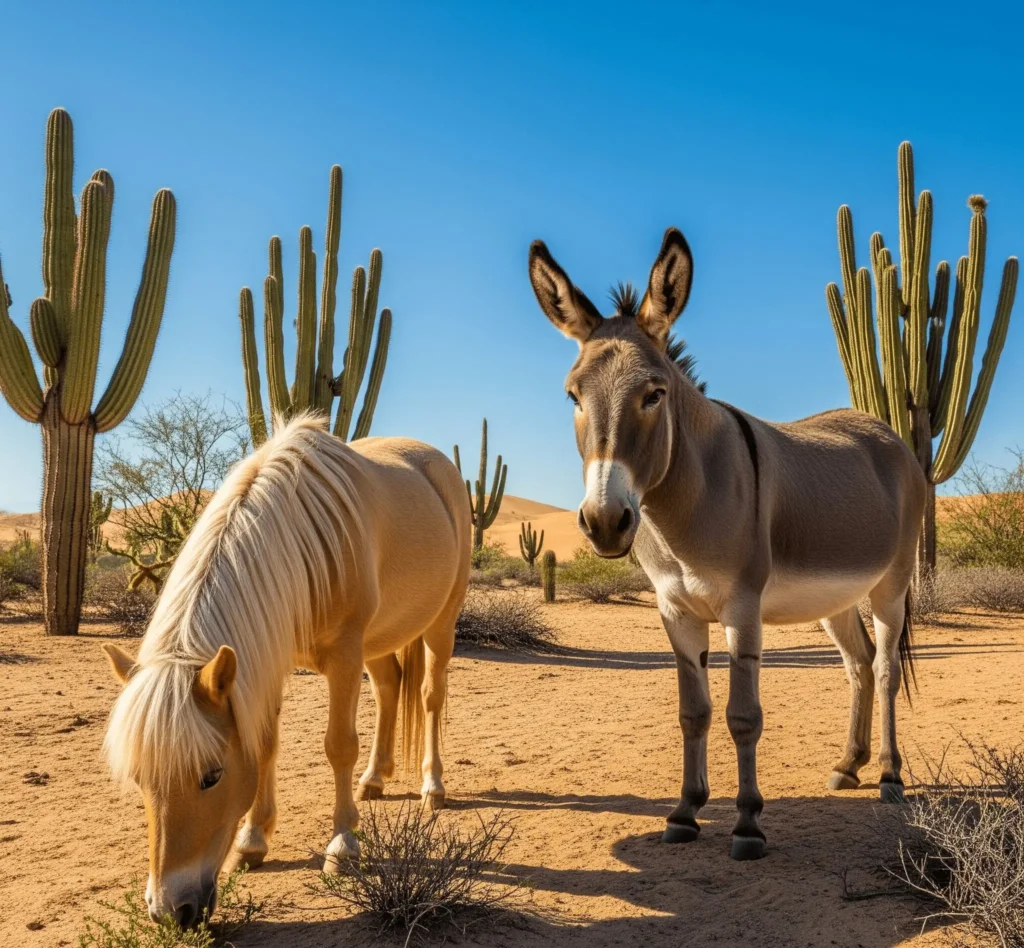
In conclusion, understanding the Donkey vs Pony differences helps us appreciate these two unique equines better. While donkeys and ponies both belong to the horse family, they have distinct features that make each special. Donkeys are known for their long ears, strong endurance, and calm but cautious nature. They have served humans for thousands of years as hardworking animals in farming, transport, and protection. Ponies, on the other hand, are smaller horses with thick coats and energetic personalities. They are versatile, often used for riding, driving, and therapy.
Knowing the physical traits, behavior, and needs of donkeys and ponies ensures we provide proper care and respect. Donkeys need dry shelter and roughage diets, while ponies require careful feeding and regular exercise. Recognizing these differences is important for owners, farmers, and animal lovers alike.
By exploring Donkey vs Pony, we see how each animal is uniquely adapted to its role and environment. This knowledge helps us build stronger, healthier relationships with these amazing animals. Whether as companions, workers, or therapy animals, donkeys and ponies deserve our understanding and kindness. Appreciating their differences is the key to their well-being and happiness.
FAQs about Donkey vs Pony
Q1: What are the main differences between donkeys and ponies?
A: Donkeys have long ears, rough coats, and are strong. Ponies are smaller horses with thick manes and are friendly. They look and act differently.
Q2: How do donkeys and ponies compare in size and behavior?
A: Donkeys are usually taller with bigger ears and quieter movement. Ponies are shorter, energetic, and like to play.
Q3: What are some important donkey vs pony facts?
A: Donkeys can carry heavy loads and are calm. Ponies are good for riding and have thick coats to stay warm.
Q4: How do I know donkey or pony: what’s the difference?
A: Look at ears, size, and sounds. Donkeys bray loudly; ponies neigh. Ponies have shorter ears and are smaller.
Q5: What are the best donkey vs pony care tips?
A: Donkeys need dry shelter and less food. Ponies need exercise and a balanced diet.
Q6: Which is better: donkey or pony?
A: It depends on your needs. Donkeys are great workers. Ponies are good for riding and fun to be with.

